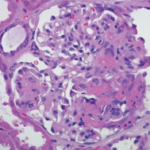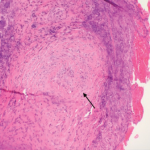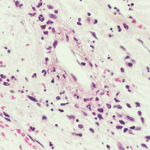WASHINGTON, D.C.—Rheumatologists do not have up-to-date diagnostic and classification criteria for vasculitis, a group of diseases that involves inflammation of the blood vessels, said experts speaking at the 2016 ACR/ARHP Annual Meeting session, Classification Criteria for ANCA-Associated Vasculitis. The most recent classification criteria were published by the ACR in 1990, and since then, new disease definitions and diagnostic tests have changed the way the vasculitides are diagnosed and treated.1
“Microscopic polyangiitis [MPA] was not even a recognized entity in the 1980s, when the last classification criteria were developed, so it was missing from the 1990 ACR criteria,” said Ravi Suppiah, MBChB, MD, FRACP, one of the lead investigators of a new study to develop updated vasculitis criteria and a rheumatologist at the Auckland District Health Board in New Zealand. “Most patients who were included in the original ACR classification criteria who had, or [who] we would think of now as having, MPA, were classified as having polyarteritis nodosa.”
To address this need, a multiyear project was undertaken to develop new classification and diagnostic criteria that incorporate current disease definitions, medical technologies and therapies. The ongoing study, called the Diagnostic and Classification Criteria in Vasculitis Study (DCVAS), includes data on more than 6,300 vasculitis patients from more than 100 sites worldwide, and recruitment will continue through June 2017. Because of their interest in supporting classification criteria development, the ACR and the European League Against Rheumatism (EULAR) have contributed funding to the project.
During the session, lead investigators of the study presented a draft of classification criteria for GPA, the first set the study has produced. Classification criteria for MPA, eosinophilic granulomatosis with polyangiitis (EGPA) and ANCA-associated vasculitis (AAV) will be released shortly.
“Why do we need new criteria? The 1990 ACR criteria no longer fit the purpose,” said Dr. Suppiah. “They don’t correlate and are not consistent with our current definitions of these disease conditions,” he added, referring to the Chapel Hill Consensus conference definitions for vasculitis created in 2012.2 “Widely used tests for anti-neutrophil cytoplasmic antibodies (ANCA) and imaging techniques like computed tomography were not routinely available in clinical practice in the 1980s. Basically, it’s time for an update.”
‘Why do we need new criteria? The 1990 ACR criteria no longer fit the purpose. They don’t correlate & are not consistent with our current definitions of these disease conditions. It’s time for an update.’ —Dr. Suppiah
Classification criteria are used for research, not diagnosis, said co-investigator Peter Grayson, MD, PhD, head of the Vasculitis Translational Research Program at the National Institute of Arthritis and Musculoskeletal and Skin Diseases in Bethesda, Md.



